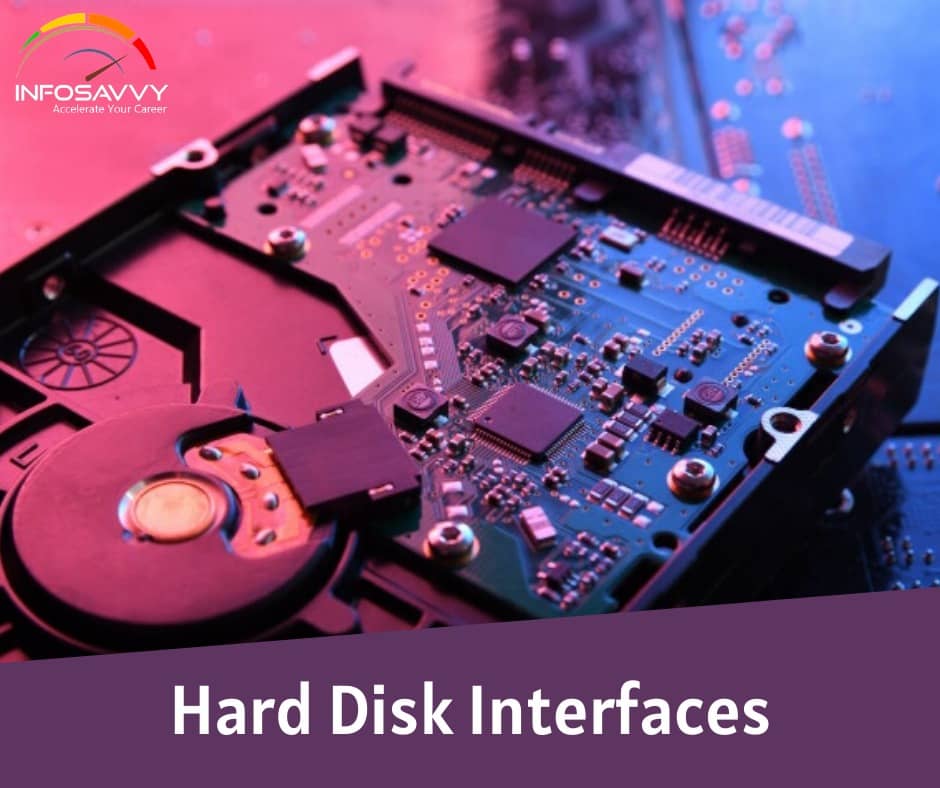
Tracks & Advanced Format of Sectors In this article explain hard disk track and diffrent andvance format of sector and there uses.
Tracks
Platters have two surfaces, and each surface divides into concentric circles called tracks. They store all the information on a hard disk. Tracks on the platter partition hold large chunks of data. A modern hard disk contains tens of thousands of tracks on each platter. The rolling heads read and write from the inner to outermost part of the disk. This kind of data arrangement enables easy access to any part of the disk; therefore, hard disks get the moniker as random access storage devices.
Each track contains a number of smaller units called sectors. Every platter has the same track density. The track density refers to the compactness of the track circles so that it can hold maximum number of bits within each unit area on the surface of the platter. It also determines the storage capacity of data on the hard disk. It is a component of area density in terms of capacity and performance.
Sector
Tracks contain smaller divisions called sectors, and these sectors are the smallest physical storage units located on a hard disk platter. “Sector” is a mathematical term denoting the “pie-shaped” or angular part of the circle, surrounded by the perimeter of the circle between two radii. Each sector normally stores 512 bytes of data, with additional bytes utilized for internal drive control and for error correction and detection. This added information helps to control the drive, store the data, and perform error detection and correction. A group of sectors combines in a concentric circle to form a track. The group of tracks combines to form a surface of the disk platter. The contents of a sector are as follows:
- ID information: It contains the sector number and location that identify sectors on the disk. It also contains status information of the sectors
- Synchronization fields: The drive controller drives the read process using these fields
- Data: it is the information stored on the sector
- ECC: This code ensures integrity of the data
- Gaps: Spaces used to provide time for the controller to continue the read process
Related Product : Computer Hacking Forensic Investigator | CHFI
These elements constitute sector overhead. It is an important determinant in calculating time taken for accessing. As the hard disk uses bits for disk or data management, overhead size must be very less for higher efficiency. The file on a disk stores the data in a contiguous series for optimal space usage, while the system allocates sectors for the file according to the size of the file. If file size is 600 bytes, then it allocates two sectors, each of 512 bytes. The track number and the sector number refer to the address of any data on the hard disk.
Advanced Format: Sectors
New hard drives use 4096 byte (4 KB or 4 K) advanced format sectors. This format uses the storage surface media of a disk efficiently by merging eight 512-byte sectors into one single sector (4096 bytes). The structure of a 4K sector maintains the design elements of the 512-byte sector with representation of the beginning and the error correction coding (ECC) area with the identification and synchronization characters, respectively. The 4K sector technology removes redundant header areas, lying between the sectors.
Clusters
Clusters are the smallest accessible storage units on the hard disk. The file systems divide the volume of data stored on the disk into discreet chunks of data for greater performance and efficient disk usage. Clusters form by combining sectors in order to ease the process of handling files. Also called allocation units, the dusters are sets of tracks and sectors ranging from 2 to 32, or more, depending on the formatting scheme. The file allocation systems must be flexible in order to allocate the required sectors to files. It can be the size of one sector per cluster. Any read or write will consume the minimum space of one cluster.
To store a file, the file system should assign the required number of clusters to them. The cluster size totally depends on the disk volume. For disk volumes, each cluster varies in size from four to 64 sectors. In some cases, a cluster size may be of 128 sectors. The sectors located in a cluster are continuous. Therefore, every cluster is a continuous chunk of space on the hard disk. In a cluster, when the file system stores a file relatively smaller than size of the cluster, extra space gets wasted and called as slack space.
Cluster Size:
Cluster sizing has a significant impact on the performance of an operating system and disk utilization. Disk partitioning determines the size of a cluster and larger volumes use larger cluster sizes. The system can change the cluster size of an existing partition to enhance performance. If the cluster size is 8192 bytes, to store a file of 5000 bytes, the file system allocates whole duster to the file and allocates two clusters of 16,384 bytes if the file size is 10,000 bytes. This is why cluster size plays a vital role in maximizing the efficient use of the disk.
By using a large cluster size, the fragmentation problem diminishes, but it will greatly increase the chances of unused space. The file system, running on the computer, maintains the cluster entries.
Clusters form chains on the disk using continuous numbers for which it is not required to store the entire file in one continuous block on the disk. The file system can store it in pieces located anywhere on the disk as well as moue it anywhere after creating the file. This cluster chaining is invisible to the operating system.
Read More : https://info-savvy.com/tracks-advanced-format-of-sectors/
This Blog Article is posted by
Infosavvy, 2nd Floor, Sai Niketan, Chandavalkar Road Opp. Gora Gandhi Hotel, Above Jumbo King, beside Speakwell Institute, Borivali West, Mumbai, Maharashtra 400092
Contact us – www.info-savvy.com








